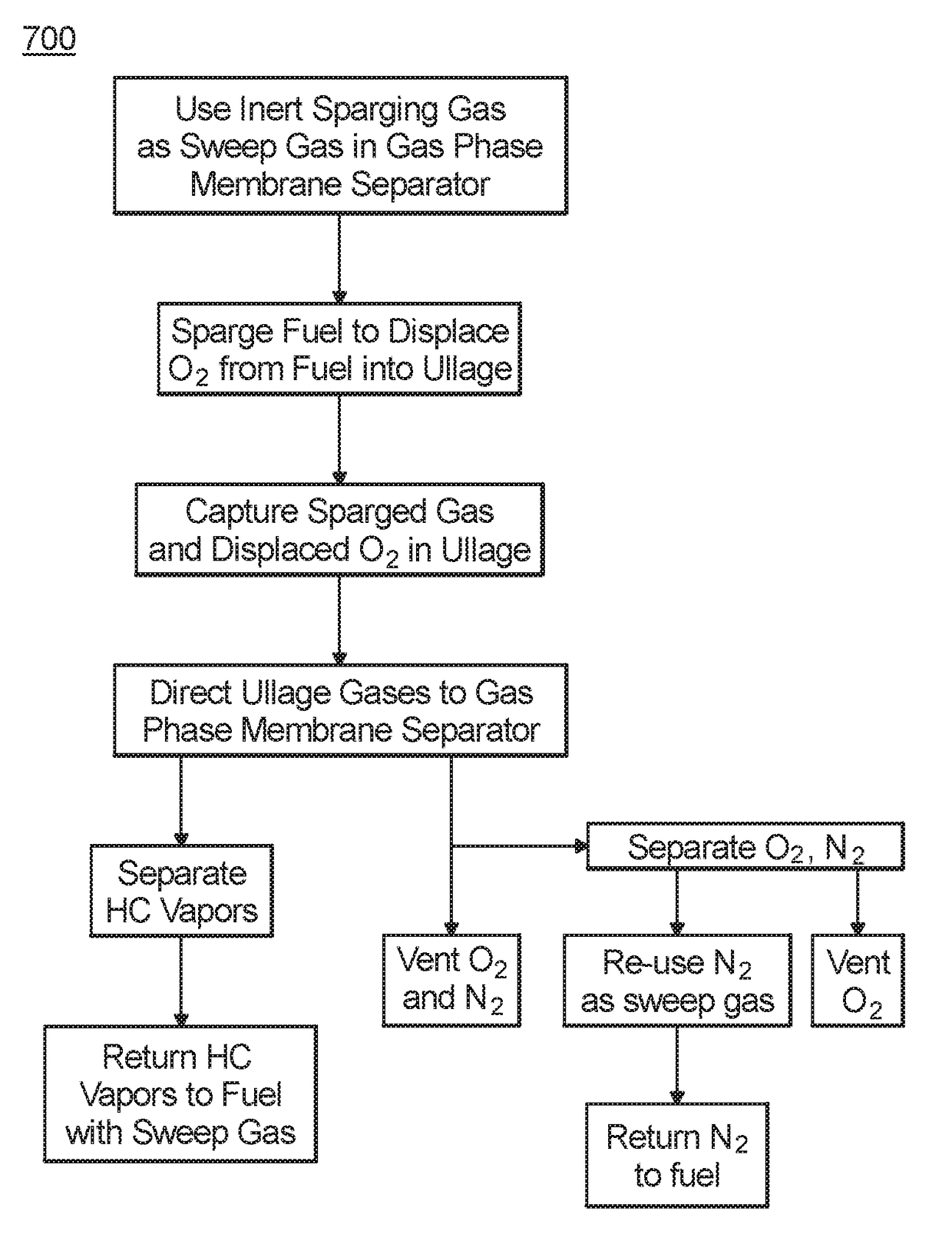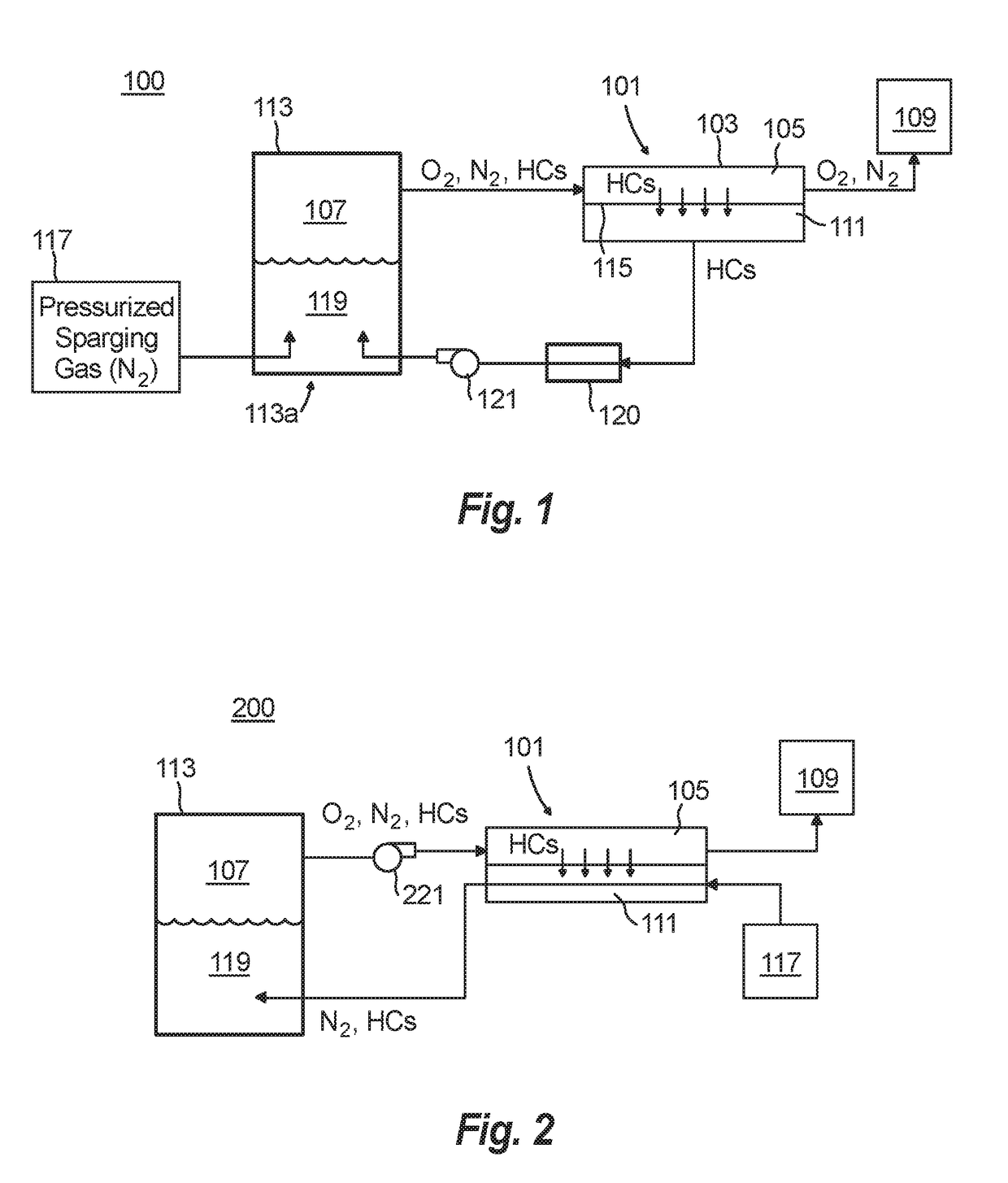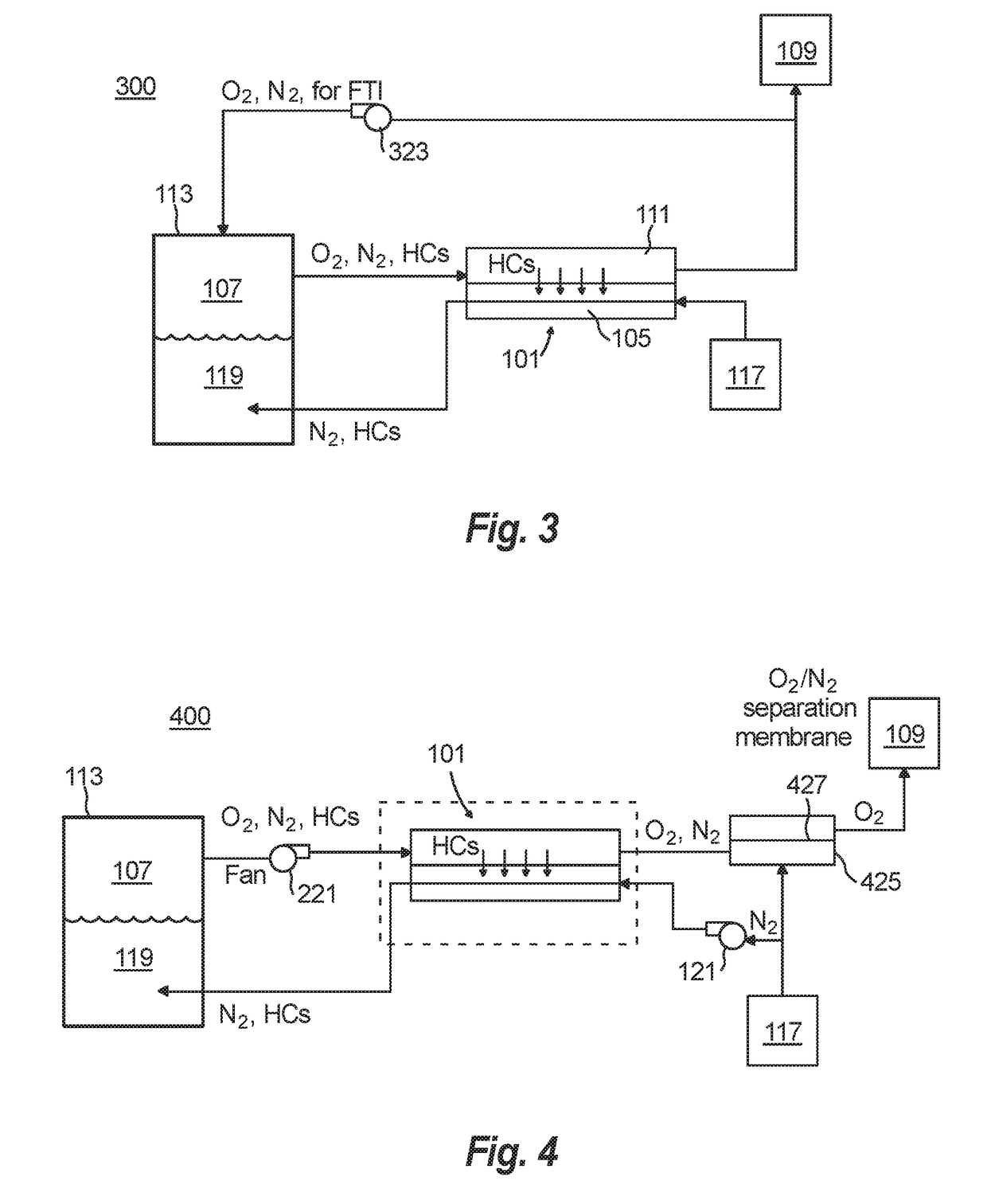Fuel deoxygenation systems
a fuel degassing and fuel technology, applied in the direction of liquid degassing, liquid degassing by filtration, separation process, etc., can solve the problems of difficult combustor relight at altitude, inefficient gas transport through liquid media to reach membranes, and large power-intensive membrane units for liquid degassing
- Summary
- Abstract
- Description
- Claims
- Application Information
AI Technical Summary
Benefits of technology
Problems solved by technology
Method used
Image
Examples
Embodiment Construction
[0023]Reference will now be made to the drawings wherein like reference numerals identify similar structural features or aspects of the subject disclosure. For purposes of explanation and illustration, and not limitation, an illustrative view of an embodiment of a system in accordance with the disclosure is shown in FIG. 1 and is designated generally by reference character 100. Other embodiments and / or aspects of this disclosure are shown in FIGS. 2-7. The systems and methods described herein can be used to deoxygenate fuel while returning lost hydrocarbons to the fuel to prevent change in fuel composition and engine performance.
[0024]Referring to FIG. 1, a fuel deoxygenation system 100 for an aircraft includes a hydrocarbon recycler 101 configured to recycle hydrocarbon vapor into liquid fuel. The recirculated hydrocarbon vapors may condense in the liquid fuel. The hydrocarbon recycler 101 includes a housing 103 that partially defines an ullage channel 105 configured to fluidly com...
PUM
| Property | Measurement | Unit |
|---|---|---|
| Permeability | aaaaa | aaaaa |
| Permeation properties | aaaaa | aaaaa |
Abstract
Description
Claims
Application Information
 Login to View More
Login to View More - R&D
- Intellectual Property
- Life Sciences
- Materials
- Tech Scout
- Unparalleled Data Quality
- Higher Quality Content
- 60% Fewer Hallucinations
Browse by: Latest US Patents, China's latest patents, Technical Efficacy Thesaurus, Application Domain, Technology Topic, Popular Technical Reports.
© 2025 PatSnap. All rights reserved.Legal|Privacy policy|Modern Slavery Act Transparency Statement|Sitemap|About US| Contact US: help@patsnap.com



